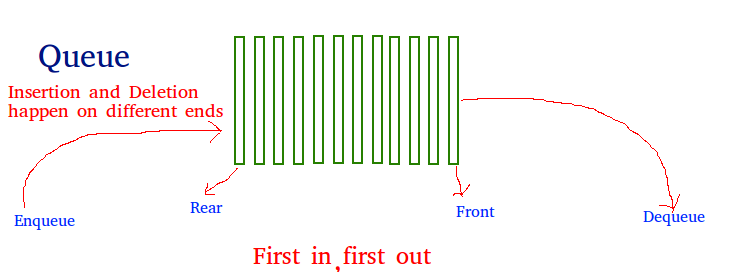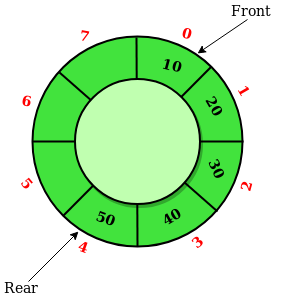Difference Between Linear Queue and Circular Queue
Last Updated :
02 Nov, 2023
Linear Queue: A Linear Queue is generally referred to as Queue. It is a linear data structure that follows the FIFO (First In First Out) order. A real-life example of a queue is any queue of customers waiting to buy a product from a shop where the customer that came first is served first. In Queue all deletions (dequeue) are made at the front and all insertions (enqueue) are made at the rear end.

Circular Queue: Circular Queue is just a variation of the linear queue in which front and rear-end are connected to each other to optimize the space wastage of the Linear queue and make it efficient.

Tabular difference between linear and circular queue:
| Arranges the data in a linear pattern. |
Arranges the data in a circular order where the rear end is connected with the front end. |
| The insertion and deletion operations are fixed i.e, done at the rear and front end respectively. |
Insertion and deletion are not fixed and it can be done in any position. |
| Linear queue requires more memory space. |
It requires less memory space. |
| In the case of a linear queue, the element added in the first position is going to be deleted in the first position. The order of operations performed on any element is fixed i.e, FIFO. |
In the case of circular queue, the order of operations performed on an element may change. |
| It is inefficient in comparison to a circular queue. |
It is more efficient in comparison to linear queue. |
| In a linear queue, we can easily fetch out the peek value. |
In a circular queue, we cannot fetch out the peek value easily. |
|
Application- People standing for the bus.
Cars lined on a bridge.
|
Application- Computer-controlled traffic signal
In CPU scheduling and memory management.
|
| If there are 10 spaces then in the best case all the 10 spaces in the queue can be filled |
If there are 10 spaces then in the best case 9 spaces can be filled at a time |
| Good for applications where overflow is not a concern. |
Good for applications where efficient use of memory is important. |
| Can lead to overflow if the rear reaches the end of the array. |
Rear wraps around to the beginning of the array, preventing overflow. |
| Not suitable for real-time systems where overflow can lead to data loss. |
Suitable for real-time systems where continuous data insertion is required. |
Like Article
Suggest improvement
Share your thoughts in the comments
Please Login to comment...